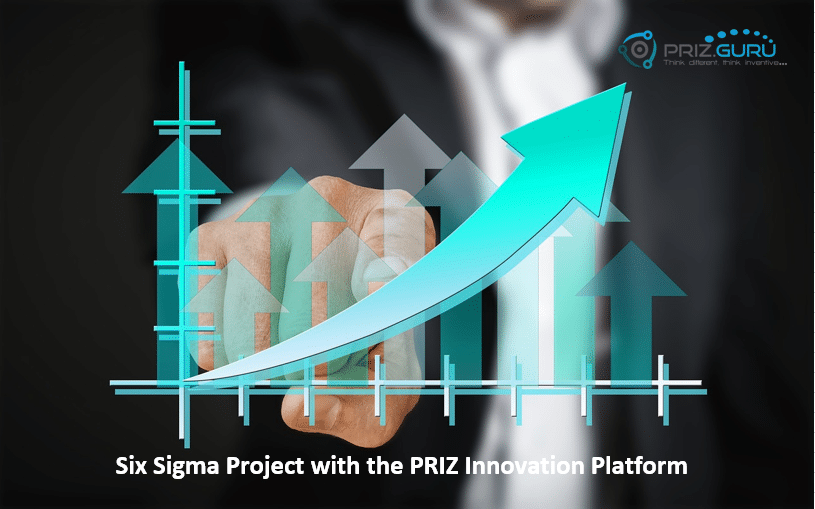Six Sigma is a popular approach for improving manufacturing quality, but small and medium-sized businesses often struggle to implement it due to a lack of resources. PRIZ Guru offers analytical and problem-solving tools to assist engineers at any step of the Six Sigma DMAIC process, including defining problems, collecting and documenting data, analyzing processes and systems, generating innovative solutions, making decisions, and effectively managing these projects. The Six Sigma process involves continuous problem-solving, and the PRIZ Innovation Platform is a comprehensive system designed to enable engineers to operate as professional problem solvers.

Continuous process improvement is crucial for keeping your business alive. The Six Sigma concept has become one of the most influential and popular approaches for improving manufacturing quality.
Developed over 30 years ago, the Six Sigma strategy has been successfully applied by large corporations such as Motorola, General Electric, and Honeywell.
However, small and medium-sized businesses (SMEs) often struggle to implement Six Sigma due to a lack of resources. Successful Six Sigma management requires special groups of engineers, which can be costly, and many SMEs do not have the budget for it.
PRIZ Guru offers analytical and problem-solving tools to assist engineers at any step of the Six Sigma DMAIC process, including defining problems, collecting and documenting data, analyzing processes and systems, creating innovative solutions, making reasonable decisions, and effectively managing these projects.
We found a brief and clear definition of Six Sigma in the Cambridge Dictionary:
Six Sigma is a method of improving production processes so that the quality of products is nearly always perfect.
We can compare Six Sigma to traffic in a tunnel. When a tunnel is narrow, traffic becomes dangerous and drivers must reduce their speed and exercise caution. Even then, accidents may still occur. However, if a tunnel is wide and well-maintained, the probability of an accident decreases. A wide tunnel provides a safe path for traffic.
Six Sigma is a safe “path” for manufacturing processes that ensure the production of reliable, high-quality products.

For additional information on Six Sigma, please refer to Six Sigma, Six Sigma Daily, Advantages and Disadvantages of Six Sigma, and other sources.
The Six Sigma strategy was first developed and implemented over 30 years ago at Motorola. While many companies have successfully implemented Six Sigma, it is mainly big corporations that benefit from its advantages, as shown by this list of Six Sigma companies.
This is understandable as Six Sigma is an expensive undertaking. Only big and rich corporations can afford to keep a dedicated department or group of talented engineers who work solely on Six Sigma projects. Startups and SMEs typically do not have the budget for Six Sigma and related strategies.
To help startups and SMEs overcome this problem, the best solution is to train all or at least a majority of engineers to think and act as Six Sigma professionals, and to provide them with relevant instruments. The use of automatic tools is key to success.
For example, the statistical software JMP – many manufacturing companies successfully use it. With JMP, everyone in the company becomes a statistician, even if they have no deep knowledge of statistics. This system helps engineers perform professional analyses and issue reports.
At PRIZ Guru, we offer analytical and problem-solving tools to assist engineers at any step of the Six Sigma process. PRIZ Platform complements the efforts of engineers to succeed as professionals.
The Six Sigma process involves continuous problem-solving. The PRIZ Innovation Platform is a comprehensive system designed to enable engineers to operate as professional problem solvers.
There are five sequential steps in Six Sigma projects: Define, Measure, Analyze, Improve, and Control. These steps are abbreviated as DMAIC.

Each step requires specific tools. The review published by Safety Culture lists the most popular Lean Six Sigma software. The advantages of using TRIZ are described in the article Six Sigma Leadership and Innovation Using TRIZ.
The original concepts of PRIZ Innovation Platform are based on TRIZ but with a practical orientation (T-theory is replaced with P-practice). The PRIZ Platform offers various creative thinking tools to help solve problems that are adapted to modern requirements for managing innovation projects, including tasks and meetings management, proper documentation, and reporting.
The purpose of this step is to estimate customer needs, define the problem, and establish project goals. PRIZ Platform offers several tools for achieving these objectives.
The purpose of this step is to provide a detailed description of the components and products of the system or process.
The purpose of this step is to define the root cause of a problem.
The purpose of this step is to generate solutions and innovative ideas.
Once we made the changes to address problems and improve operations, it’s essential to bring the process under control to ensure its long-term effectiveness. To do this, you should:
The main purpose of this final step is to manage the implementation and future progress. Here, you document the new changes and ensure that you fully understand how to sustain the improved process.
What did you think of our process improvement guide? Do you have any tips we may have left out? Let us know in the comments below!